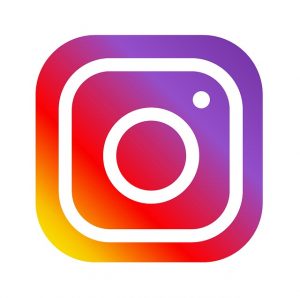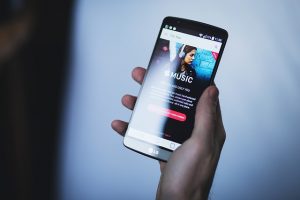The ever-growing number of applications in online stores makes mobile development one of the most dynamic and competitive sectors. However, the average user retention rate of mobile apps was only 38% in 2018 (for comparison, it was 38% and 37% in 2016 and 2017 respectively). How to make the app a success? UI design of the app strongly enhances UX which is the main component that ensures the success of the app. In order to improve analytics, we decided to understand the design trends of mobile development for 2019.
Any App Launched onto the Market in 2019 Should Focus on
1. Color gradients and bright palettes
Designers use color as a tool capable to spark the interest, set the mood, influence the person’s emotions and actions. More vivid and bright colors gain popularity because they make your application more competitive by grabbing the user’s attention. The color gradient trend appeared last year, and this year app developers are likely to use even more complex palettes not only for the background but other design elements as well. Color gradients add depth and dimension that flat colors lack, thus directing user’s attention to the highlighted design elements.
2. Progressive disclosure
It is a technique designers use to hide complex information or infrequently used actions and reveal only the essentials users need for comprehension. The unseen information becomes visible only when the user requests it. This pattern helps to provide only relevant features or information at each step of the user’s activity and doesn’t overload the person’s attention with content. The more features you can defer by using tooltips or labels, the simpler user interface you’ll have. Thus the mobile app looks beginner-friendly and doesn’t lack functionality since all the content and features are available on demand.
3. Full-screen background
The frameless smartphones have become a trend. It means more space available on the screen that is expected to be filled up with the visuals. These can be images, photos or videos with high resolution to provide the user with maximum realism. The full-screen background makes an app emotionally appealing. The quality of the visuals that give a sense of authenticity directly impacts the user’s expectations and experience.
4. Button-less UI
Brands like Apple, Samsung, Google are the main trendsetters of the industry. After they had released the smartphones without home buttons in 2018, they set a mainstream trend in mobile app design. Interaction by clicking is gone because gesture-based interaction is faster, more intuitive and natural. Currently swiping is a dominating gesture applied ubiquitously.
For instance, in email and messenger apps swiping has replaced the delete button; in Instagram, it dictates the whole navigation of the app. This approach speeds up user-app interaction, and saves space for more creative design elements, making mobile UI more efficient and modern.
5. Overlapping effects
While the previously mentioned design patterns are aimed at saving the screen space by reducing cutter elements, overlapping intends to fill it with fonts, images, and illustrations to make the interface more tempting and eye-catching. A poor static interface implies it has little value. The overlapping features coupled with shadows enhance UI making it dimensional and striking.
6. Seamless interface
It’s a software technology that unites two programs in a single user interface. It may contain hidden features in the background while UI is easy and transparent. Simplicity and elegance in design is still a tendency every developer strives to reflect in the app. The seamless interface provides for intuitiveness and picture-perfect feel with all the content available on a single page. This helps the app catch users’ attention. The technology facilitates app navigation and enhances UX. Seamlessness is what the user expects from any app or website.
7. Dynamic functional animation
This trend shifts the focus of animation from aesthetic delight to functionality. Designers incorporate functional animation because it reduces cognitive load, while increasing UI responsiveness and interactivity. The animation can perform different functions including guiding, visual feedback on user’s action, visual uploading status, and navigational transitions. It’s important to find the balance and embed animation with a particular purpose, not for the sake of animation itself. When it looks as a natural part of the UI design, you achieve the goal.
Conclusion
The UI design is a first thing user see before even starting to interact with an app. It’s your initial pitch to a user that should be live and engaging. The impression and emotions which the design elicits define the level of engagement and time users will spend with your app. The basis of a compelling UI/UX lies in the harmony between simplicity and number of eye-catching design elements. Each mobile development company should stay up to date with the latest design trends to show that they care about the best user experience and deliver a valuable and useful product.





